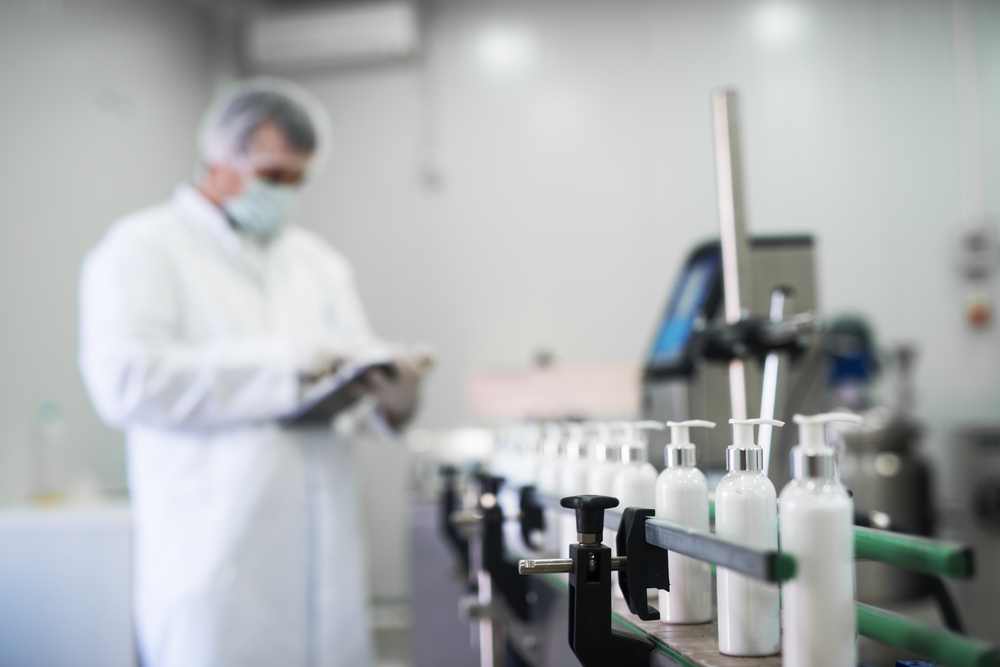Five Undeniable Benefits of Automation For Businesses
In 2021, we wrote an article about when the right time to invest in automation was. As part of that, we covered off what the main benefits were.
However, after getting around a table and chatting over a cuppa, we’ve decided that it deserves a blog all on its own. The reality is that the benefits of automation are undeniable, offering a significant and positive impact in many commercial sectors.
As well as less tangible advantages, such as quality of life, robotics and artificial intelligence (AI), smart automation can generate substantial economic benefits, with analysis from PwC estimating that it could potentially contribute up to an eye-popping $15 trillion to global GDP by 2030.
Evolving technology continues to be a key packaging industry trend and has a significant and positive impact in many commercial sectors.
Manufacturing is certainly no exception to that, particularly when it comes to automation and robotics.
The increase in the number of manufacturing companies adopting industrial automation is reflected by the fact that, according to Fortune Business Insight, the global market is projected to grow from almost $192 billion in 2021 to over $355 billion in 2028.
What is automation?
At its simplest, automation puts the technology and machinery, such as filling machines in place to carry out work which would previously have been done by a human operator.
Through a combination of computerised programming commands and powerful machinery, automated systems or production and business processes replace manual tasks which are often repetitive in nature and generally undertaken by one person.
The term itself, though, is far from simple and has become a vast concept.
Automation can take many forms, including mechanisation, robotics and AI. A common method of production since the 1970s, manufacturing automation can be divided into three general types:
- Fixed automation – production processes and assembly which is preset to manufacture just one product.
- Programmable automation – the operation sequence and configuration of equipment can be changed, based on commands programmed or coded into the system.
- Flexible automation – it’s possible to respond and adapt easily to changing production requirements, such as product type and quality.

The benefits of automation
The benefits of automating a manual process, especially when it comes to machinery are endless, but a few key ones are covered here.
1. Productivity
One of the main benefits of automating a manual process is the dramatic gains that can be made when it comes to productivity and the increase in overall throughput. This is largely down to the fact that, with manufacturing automation, it is possible to produce a greater quantity in less time.

As automated machines can be set to work continuously, and often unmanned, production capacity can be increased and assembly times reduced at quite a significant rate. Of course, neither do they require holidays, nor take sick leave. Bonus!
So, even if they are only running during normal shift times, there will be a noticeable increase in production and productivity.
2. Time and cost savings
While the initial investment and set-up costs for automated manufacturing systems can be high, near-constant overheads and lower operating costs from the faster processing of orders mean that there will be more financial benefits over time.
Investing in automation solutions to replace manual operations also means that manufacturers will no longer be affected by increasingly high labour costs. Saved time and cost = increase in the bottom line. And who doesn’t like that!
3. Product quality and consistency
Automated machinery such as capping machines work at a continuous and constant pace, with movements which are focused, consistent and highly exact.
As such, the need for reworking is often unnecessary and there’s a considerable reduction in waste, both of which may not be possible with manual labour.

This elimination of human error results in products that are both uniform and of higher quality, with adaptive control and monitoring at different stages of the production process ensuring there’s no reduction in performance, even after many hours of continuous work.
This can also have a positive impact on customer experience and satisfaction.
4. Staff safety
Worker safety is one of the most important benefits of automation.
Automated business and manufacturing processes allow employees to work in a way that is both smarter and safer, avoiding many of the tasks which can lead to workplace injuries and protecting them from the many potential hazards found in a manufacturing environment.
5. Employee empowerment
Human workers undertaking repetitive, time-consuming and mundane tasks can often be bored and unfulfilled, with a feeling that their work isn’t important.
Finding labour for these kinds of roles is becoming increasingly more difficult, not helped by uncommonly low unemployment in the UK.
Automating mundane tasks means that employees can be given work that is far more challenging and empowering, which may have a positive impact on staff wellbeing and turnover.
The potential challenges of automation
Along with the many advantages of automation there are also potential drawbacks that need to be considered, even though the positives far outweigh the negatives.
These challenges are in no way impossible to overcome, but they are worth bearing in mind before committing to installing automated manufacturing systems.
Initial investment
The sizeable upfront investment associated with installing automated machinery is perhaps one of the main reasons why there’s a degree of hesitancy from manufacturers.
Automation represents a significant financial outlay especially during the installation and configuration period, but it does offer a huge return on investment in the long term. A system that’s quickly up and running, and which remains productive for long periods, will soon offset the cost of new equipment and accompanying expenses. And, even after initial costs are recouped, the savings will continue.
Redundancies
While some manufacturers are worried that automation may lead to roles becoming redundant, it does open up opportunities for employees to put skills to better use in other areas of the business where they can be more productive, rather than monotonous labelling tasks all day, for example.
With the automation of tedious, repetitive and monotonous manual processes to improve output and productivity, there can be more of a focus on employee satisfaction and training, in technical and digital skills to prepare them for an increasingly automated future.
Knowing when to invest
Although financial considerations are a major factor when deciding when to invest in automated processes, it’s also important to recognise opportunities and act on them when they present themselves.
Before committing, there are questions that should definitely be asked. Is there a demand for potential growth? How much product is being made and how many changeovers are required? And, perhaps most importantly, are the finances available?
With these questions answered, a business should be in a position to decide whether task automation is a viable option.
In conclusion
Although the UK is the world’s ninth-largest manufacturing nation, it ranks only twenty-second when it comes to the deployment of automated manufacturing equipment.
UK businesses need to realise that investment in automation can lead to a whole range of new opportunities. In fact, automated manufacturing should be a central part of any operation looking to increase production capacity, reduce costs, achieve optimal efficiency and gain a competitive advantage in the market.
We hope you found this blog on the benefits of automation useful and if you have any questions, please feel free to contact us.
(image sources: shutterstock)


